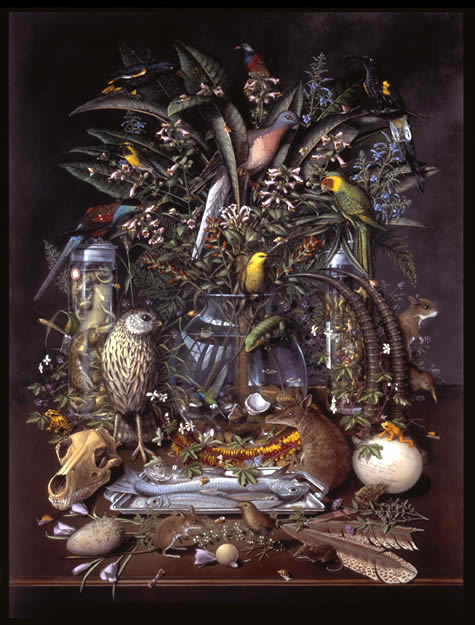Another inaugural professorial lecture, this time for Philip Seddon. I arrived in time for the lecture after visiting my flat to get my washing in before dusk, and ominous clouds. The lecture theatre filled up, with the overflow watching in another of Archway theatres on live-streaming. This was a popular lecture. The benefits of becoming a professor is that you end up on a lot more committees.
We are becoming alienated from the natural world. More people live in urban areas, over 50% of the world’s population. The example was sighted that in a survey of school children done while Seddon was in Saudi Arabia 50% of the pupils described the desert fox as ‘dangerous’. Yes, really!
This puts pressure on wildlife populations. September 2014 is the centennial of the death of the last passenger pigeon. She was called ‘Martha’. It is dangerous to be named as the last of a species. Ask Lonesome George who was last of an island of Galapagos Tortoises. The last of mainland Kakapo, died 1987, was Richard Henry Kakapo, named for Richard Treacy Henry. The human Henry unsuccessfully established Resolution Island as a sanctuary for native birds. It was too close to the mainland and the stoats got in, a fatal winter.
This was not the first attempt at conservation translocation. At the same time Edward McIlhenny, famous for his ubiquitous tabasco sauce, founded the sanctuary Bird City in Lousiana. In 1907 the American Bison Society began the restoration of bison on the great plains, having previously shot as many as possible to break the hold on land by the Plains Indians.
A little over quarter of the translocations happen in New Zealand. Species cannot be restored to the state that they were previously. It is a dynamic state. Species cannot be restored to environments where preditors now exist. Climate change will also make a difference, like to what a tuatara’s gender will be. Species are introduced to non-historical habitats to allow them to survive and flourish. There has to be a balance between the wolves and the elks.
Sometimes we need to make ecological substitutes. After goats and pests were removed from Galapagos Islands giant tortoises were reintroduced to graze on weeds and allow indigenous plants to flower. They were not the same sub-species there before, now extinct. The ecology was put back together again. Good to have all the pieces.
Can we resurrect species? Through breeding, cloning and splicing? Technically yes. They won’t be the same species. Do we need new giant rattites in New Zealand? How about we save the kiwi!
Like in industrial fishing the baselines are shifting as the ecologies become poorer. We are dealing with limited resources.

Conversations about Conservation | Gaia Gazette
Nov 10, 2014 @ 05:42:13